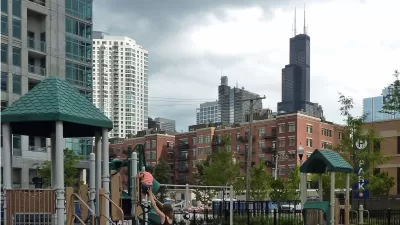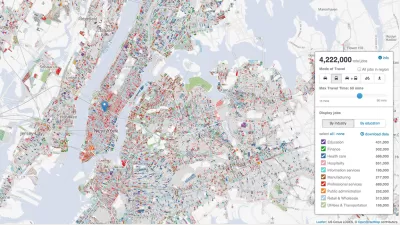Edward Brennan waged an extended turn-of-the-century campaign to clean up Chicago's then-confusing address numbering system. Though few recognize his name, Brennan's legacy lives on in modern Chicago.

Writing for WBEZ, Chris Bentley profiles Edward Brennan, the proto-planner Chicagoans have to thank for "one of the simplest street systems of any big city in the world, with every address emanating out from a central origin point at the intersection of State & Madison Streets."
A one-time delivery boy and bill collector, Brennan balked at his city's address numbering system, or rather lack thereof. In the late 1800s, Chicago was a patchwork of smaller towns recently annexed by the expanding metropolis. Streets kept their old address systems, and in many places suffered from multiple and duplicate names.
"But Brennan wouldn't accept the status quo. Beginning in the 1890s he started a scrapbook, collecting newspaper articles about problems with city navigation or delays due to address confusion [...] Brennan lobbied business leaders and newspaper editors for decades [...]"
Brennan's efforts eventually gathered steam, and he drafted a plan to re-number the streets. "It included four big ideas: All addresses would be centered around a 0,0 point at State and Madison Streets; street names would include the direction; even-numbered addresses would always be on the west and north sides of any street, with odd numbers on the east and south sides; house numbers would increase by 800 (or 8 blocks) every mile, although Brennan had originally proposed 1000 addresses per mile. Brennan's plan would also involve renaming many streets in order to cut confusion caused by duplication and other problems."
In 1908, the City Council passed Brennan's proposal, which went into effect with some controversy the next year. Although his name isn't widely recognized, Brennan remains an excellent example of activist planning from a citizen who recognized a problem and fought to implement a solution.
FULL STORY: The unsung hero of urban planning who made it easy to get around Chicago

Alabama: Trump Terminates Settlements for Black Communities Harmed By Raw Sewage
Trump deemed the landmark civil rights agreement “illegal DEI and environmental justice policy.”

Study: Maui’s Plan to Convert Vacation Rentals to Long-Term Housing Could Cause Nearly $1 Billion Economic Loss
The plan would reduce visitor accommodation by 25% resulting in 1,900 jobs lost.

Why Should We Subsidize Public Transportation?
Many public transit agencies face financial stress due to rising costs, declining fare revenue, and declining subsidies. Transit advocates must provide a strong business case for increasing public transit funding.

Paris Bike Boom Leads to Steep Drop in Air Pollution
The French city’s air quality has improved dramatically in the past 20 years, coinciding with a growth in cycling.

Why Housing Costs More to Build in California Than in Texas
Hard costs like labor and materials combined with ‘soft’ costs such as permitting make building in the San Francisco Bay Area almost three times as costly as in Texas cities.

San Diego County Sees a Rise in Urban Coyotes
San Diego County experiences a rise in urban coyotes, as sightings become prevalent throughout its urban neighbourhoods and surrounding areas.
Urban Design for Planners 1: Software Tools
This six-course series explores essential urban design concepts using open source software and equips planners with the tools they need to participate fully in the urban design process.
Planning for Universal Design
Learn the tools for implementing Universal Design in planning regulations.
Smith Gee Studio
Alamo Area Metropolitan Planning Organization
City of Santa Clarita
Institute for Housing and Urban Development Studies (IHS)
City of Grandview
Harvard GSD Executive Education
Toledo-Lucas County Plan Commissions
Salt Lake City
NYU Wagner Graduate School of Public Service




























